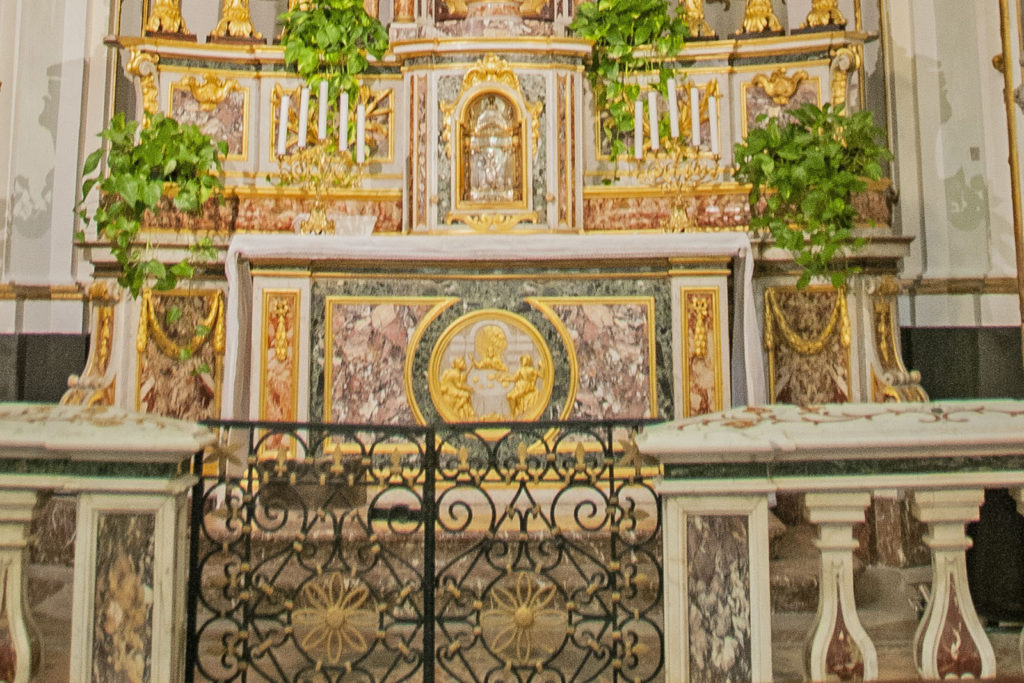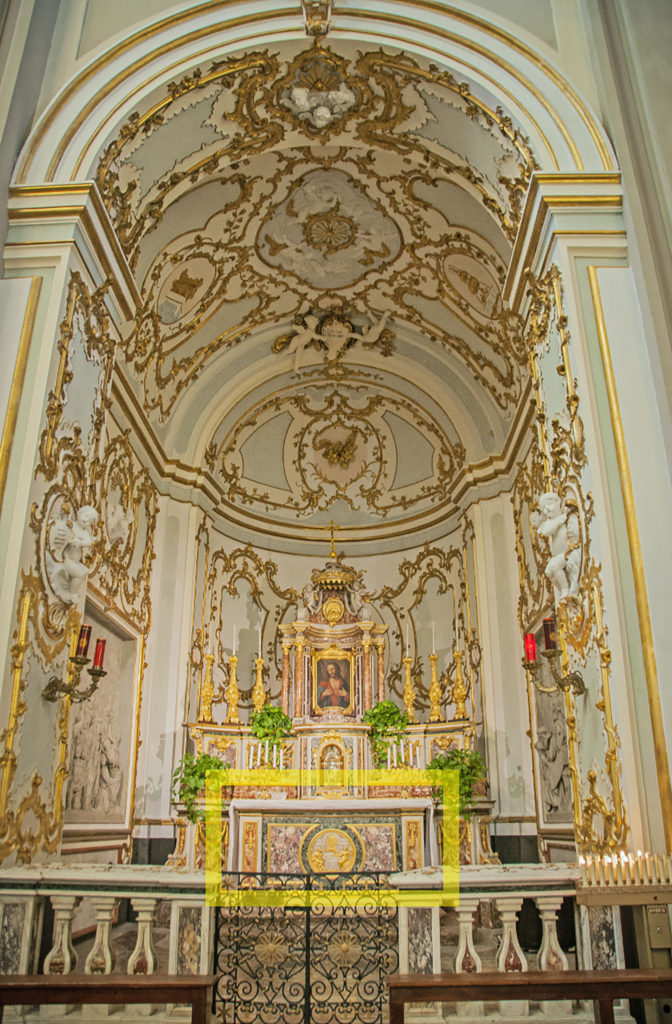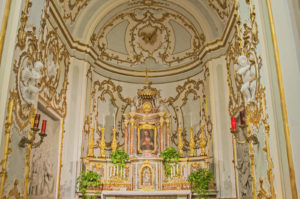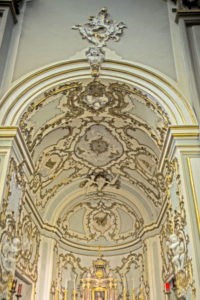The chapel of the Santissimo Sacramento (Most Blessed Sacrament), to the right of the main
apse
is marvellous, a veritable triumph of colours and materials. Colourful elements welcome worshippers at the entrance and form the basis of the entire chapel’s decoration.


The
polychrome
polychrome altar immediately attracts the attention of passers-by. Red, green, white and gold are featured in the
aedicula
, where the painting of the Most Sacred Heart of Jesus was placed in the 19th century.
The wall decorations, the
stuccoes
, the gold and the blue background embellish the interior of the chapel and transport worshippers to a supernatural dimension.


Using relief, the chapel recounts some of the most important moments in Christ’s life such as the Supper at Emmaus, carved in marble and inserted in the lower part of the altar in a medallion, and other stucco depictions placed at the sides of the altar.
These show the Offering of Melchizedek, a very important figure in the Old Testament who offers bread and wine to God in the name of Abraham, and the Last Supper in imitation of the famous fresco by Leonardo da Vinci, now kept in the church of Santa Maria delle Grazie in Milan.